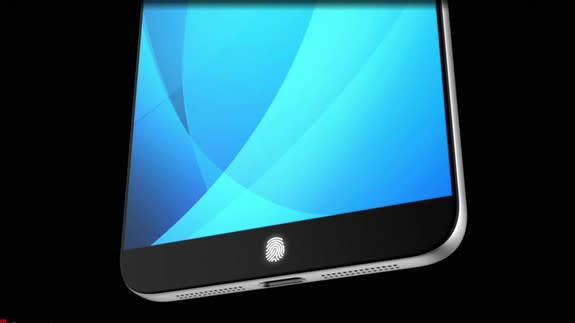This new fingerprint tech could be the death of the iPhone home button

Where we're going, we don't need buttons or circles, just glass. Endless sheets of glass.
That is the promise of future smartphone technology, according to Synaptics, a company that builds they physical user interfaces for many devices, including fingerprint scanners, touchscreens and trackpads. (Synaptics was the company responsible for the iPod's legendarily usable scroll wheel.)
SEE ALSO: iPhone 8 with curved OLED screen coming, report says
On Tuesday, Synaptics announced what it's calling the first-ever optical-based fingerprint sensor for smartphones. The new FS9100 sensor is designed to detect fingerprints through up to 1mm of glass. That means future phones will be able to dispense with the need for a stand-alone fingerprint sensor; instead the sensor will be built right into the display.
That could, in turn, mean the end of home buttons.
"By bringing optical sensing technology with the right form factor and power consumption envelope to smartphones and tablets, Synaptics is enabling the elimination of the home button which is a critical next step to full top-to-bottom, edge-to-edge smartphone and tablet displays," said IDC Research Director Les Santiago in a press release.
The implication here is that future smartphones may finally be that slab of glass we've been dreaming about. The Xiaomi Mi Mix and Sharp Aquos Crystal phones have given us a hint of phones that are nothing but screen, but they still have a thick bezel along the bottom. Synaptics' new sensor tech could finally give us a phone with a true edge-to-edge display.
This technology could even end up in the iPhone 8, which has been rumored to be an OLED-screen-sporting, edge-to-edge, glass-covered smartphone.
Synaptics claims its FS9100 sensor is both extremely thin and low power — two barriers that previous prevented optical sensors from being practical for mobile devices where size and battery consumption are critical considerations.
There are other concerns about optical sensors, like the so-called "gummi bear hack" in which a soft, gummy material is used to pick up a fingerprint and then applied over the optical sensor. A Synaptics spokesperson explained to Mashable that the company will combat fake fingerprints with its SentryPoint Security Suite, which includes their Quantum Matcher PurePrint technology, which uses artificial intelligence to ferret out fake prints, essentially looking for "liveness."
The FS9100 chips will go into mass production sometime in Q2 of 2017, which would be in time for mass-production of the iPhone 8. However, Apple may choose to bypass Synaptic's optical technology.
Apple typically doesn't talk about its suppliers, but they haven't used Synaptics consistently since the early days of the iPod. In addition, its Touch ID technology already works through a layer of transparent material — sapphire.
More importantly, the company recently patented fingerprint-sensing technology that enables fingerprint reading though any part of an iPhone or iPad screen, meaning it may have already figured out this tech by other means, and it might not need or be interested in Synaptics' solution. Well, there's always Samsung.

 Yahoo News
Yahoo News 